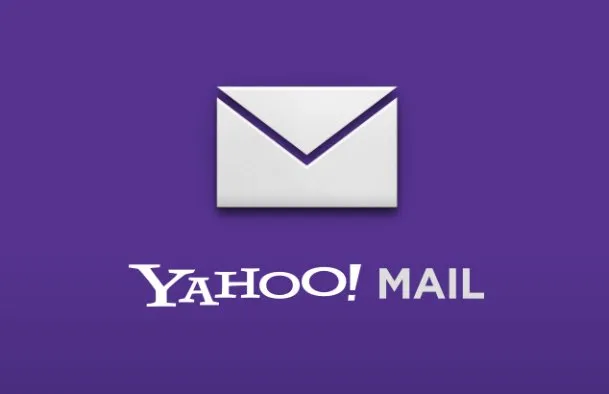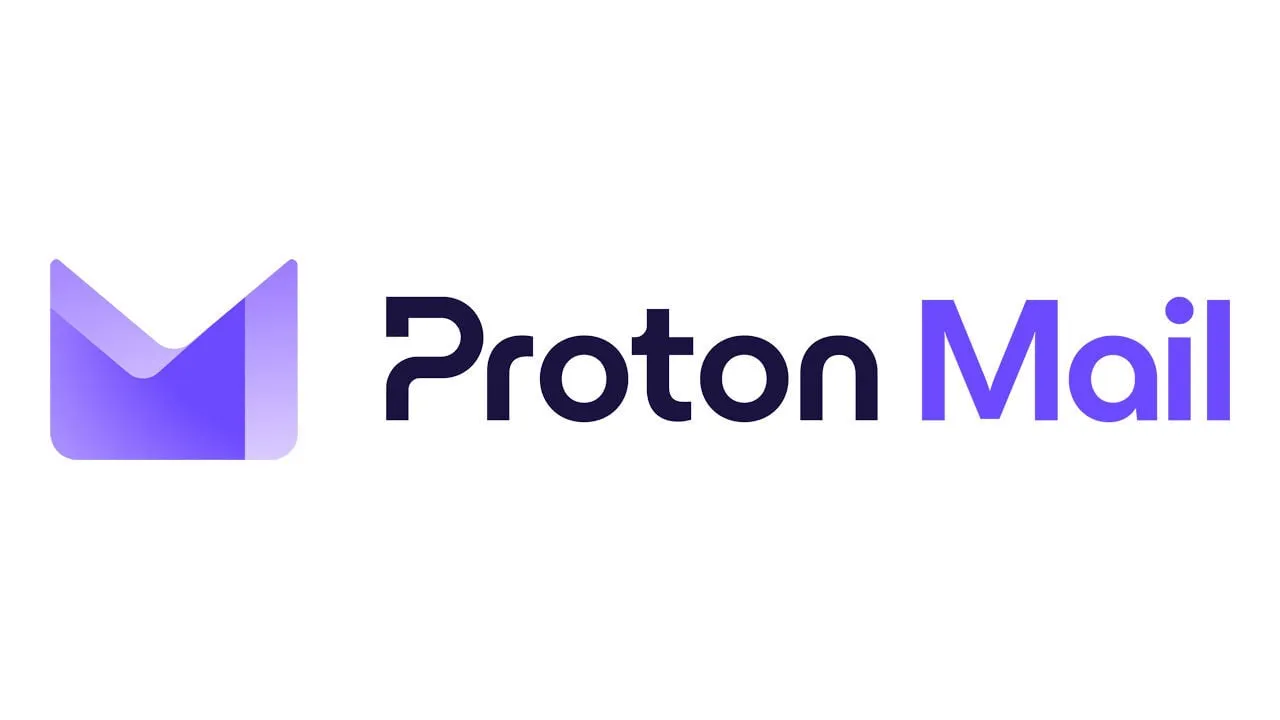
The Best Free Email Accounts for Everyday Use
In today’s digital age, email has become an indispensable tool for communication. It allows us to stay connected with friends, family, and colleagues, and also serves as a platform for marketing, promotions, and business transactions. With the increasing demand for email services, there is an overwhelming number of options available in the market, making it difficult to choose the best one.
Some may prefer a professional-looking email address while others look for high storage capacity or advanced security features. Whatever your preference may be, there are several free email accounts that offer all these features and more. In this article, we’ll take a closer look at the best free email accounts currently available, and explore their features and benefits.
Outlines:

- Gmail
- Introduction to Gmail
- Features of Gmail
- User-friendly interface
- Large storage capacity
- Advanced spam filters
- Integration with Google services
- How to create a Gmail account
- Tips and tricks for using Gmail effectively
- Comparison with other free email accounts
- Outlook.com
- Introduction to Outlook.com
- Features of Outlook.com
- Clean and organized interface
- Integration with Microsoft services
- Advanced security features
- Skype integration
- How to create an Outlook.com account
- Tips and tricks for using Outlook.com efficiently
- Comparison with other free email accounts
- Yahoo Mail
- Introduction to Yahoo Mail
- Features of Yahoo Mail
- Customizable interface
- Unlimited storage capacity
- Built-in news and weather updates
- Spam protection
- How to create a Yahoo Mail account
- Tips and tricks for using Yahoo Mail effectively
- Comparison with other free email accounts
- Zoho Mail
- Introduction to Zoho Mail
- Features of Zoho Mail
- Ad-free interface
- Custom domain support
- Team collaboration tools
- Advanced security features
- How to create a Zoho Mail account
- Tips and tricks for using Zoho Mail efficiently
- Comparison with other free email accounts
- ProtonMail
- Introduction to ProtonMail
- Features of ProtonMail
- End-to-end encryption
- Self-destructing messages
- Secure email storage
- Multi-platform support
- How to create a ProtonMail account
- Tips and tricks for using ProtonMail effectively
- Comparison with other free email accounts
- Tutanota
- Introduction to Tutanota
- Features of Tutanota
- Encrypted email communication
- Calendar and contacts synchronization
- User-friendly interface
- How to create a Tutanota account
- Tips and tricks for using Tutanota efficiently
- Comparison with other free email accounts
Gmail

Introduction to Gmail
Launched by Google in 2004, Gmail is one of the most popular and widely used free email accounts. With over 1.5 billion active users worldwide, it has become synonymous with email communication. Apart from its primary function of sending and receiving emails, Gmail also offers several other features that make it stand out from other email services.
Features of Gmail
User-friendly interface
One of the main reasons for Gmail’s popularity is its user-friendly interface. The clean and organized layout makes it easy to navigate and access different features. Users can customize their inbox by choosing from different themes and organizing their emails into various categories such as Primary, Social, and Promotions. It also allows users to easily search for specific emails through keywords or filters.
Large storage capacity
Another notable feature of Gmail is its large storage capacity. Users get a whopping 15 GB of free storage, which is more than enough for most users’ needs. And if you still need more space, you can always purchase additional storage at affordable prices.
Advanced spam filters
Gmail’s advanced spam filters are a major advantage over other email services. It uses machine learning algorithms to detect and block spam emails, ensuring that your inbox remains clutter-free. Gmail also automatically categorizes promotional emails and newsletters into the Promotions tab, keeping your Primary tab reserved for important emails.
Integration with Google services
Since Gmail is owned by Google, it seamlessly integrates with other Google services, making it much more than just an email account. Users can access Google Drive, Google Calendar, and Google Hangouts directly from their Gmail account, making it a one-stop platform for all their communication and productivity needs.
How to create a Gmail account
Creating a Gmail account is straightforward and only takes a few minutes. Follow these simple steps to get started:
- Go to www.gmail.com on your web browser.
- Click on the “Create Account” button.
- Fill in your personal information such as name, username, password, and phone number.
- Agree to the terms and conditions.
- Verify your phone number through the code sent to you via text message.
- Your Gmail account is now created and ready to use.
Tips and tricks for using Gmail effectively
- Use keyboard shortcuts: Gmail offers several keyboard shortcuts to make navigation easier and faster. Some commonly used shortcuts include “C” to compose a new email, “R” to reply, and “A” to archive an email.
- Utilize labels and filters: Labels and filters allow you to organize your emails into categories and folders, making it easier to find them later. You can create custom labels and apply filters based on specific criteria.
- Use Google Tasks: Gmail has a built-in task manager called Google Tasks, which allows you to create and manage your to-do lists directly from your inbox. This feature can help you stay organized and productive.
- Enable offline mode: With Gmail’s offline mode, you can access your emails even without an internet connection. This is especially useful for those who travel frequently or have limited access to the internet.
- Utilize Google Drive integration: Instead of sending large attachments via email, use Google Drive to share files with others. This not only saves time but also ensures that your email doesn’t exceed the maximum attachment limit.
Comparison with other free email accounts
| Features | Gmail | Outlook.com | Yahoo Mail |
|---|---|---|---|
| Storage capacity | 15 GB | 15 GB | Unlimited |
| User-friendly interface | Yes | Yes | Yes |
| Integration with other services | Yes | Yes | Limited |
| Advanced spam filters | Yes | Yes | Yes |
Outlook.com
Introduction to Outlook.com
Outlook.com, previously known as Hotmail, is a free email service offered by Microsoft. It was first launched in 1996 and has since undergone several updates and rebranding. Although it may not be as popular as Gmail, Outlook.com has its own set of loyal users who swear by its features and interface.
Features of Outlook.com
Clean and organized interface
One of the standout features of Outlook.com is its clean and organized interface. The layout is similar to Microsoft’s other productivity tools, making it easy for users to navigate and find what they’re looking for. The customizable folders and categories allow users to organize their emails efficiently.
Integration with Microsoft services
Similar to Gmail’s integration with Google services, Outlook.com integrates seamlessly with Microsoft’s other applications such as OneDrive, Calendar, and Skype. This makes it convenient for users to access all their Microsoft tools from one platform.
Advanced security features
Outlook.com offers advanced security features such as two-factor authentication, which adds an extra layer of protection to your account. It also uses machine learning algorithms to detect and block suspicious emails and attachments, ensuring the safety of your account.
Skype integration
Outlook.com has Skype integration, allowing users to make video calls and chat with their contacts directly from their inbox. This feature is particularly useful for those who use Skype for business purposes or have friends and family living in different parts of the world.
How to create an Outlook.com account
- Go to www.outlook.com on your web browser.
- Click on the “Sign Up” button.
- Fill in your personal information such as name, username, password, and phone number.
- Agree to the terms and conditions.
- Verify your phone number through the code sent to you via text message.
- Your Outlook.com account is now created and ready to use.
Tips and tricks for using Outlook.com efficiently
- Customize your inbox: You can customize your inbox by changing the layout, colors, and background image according to your preference.
- Use Quick Actions: Outlook.com offers Quick Actions, which allows you to perform actions such as delete, flag, or mark as read without opening the email.
- Utilize Sweep: The Sweep feature allows you to automatically delete or move emails from a particular sender or with specific keywords to keep your inbox organized.
- Use Focused Inbox: Similar to Gmail’s Primary tab, Outlook.com offers a Focused Inbox feature that separates important emails from the rest, making it easier to focus on essential emails.
- Take advantage of keyboard shortcuts: Like Gmail, Outlook.com also offers several keyboard shortcuts for faster navigation.
Comparison with other free email accounts
| Features | Outlook.com | Gmail | Yahoo Mail |
|---|---|---|---|
| Storage capacity | 15 GB | 15 GB | Unlimited |
| Clean and organized interface | Yes | Yes | Yes |
| Integration with other services | Yes | Yes | Limited |
| Advanced security features | Yes | Yes | Yes |
Yahoo Mail

Introduction to Yahoo Mail
Yahoo Mail, launched in 1997, was one of the earliest free email services available. Although it may not be as popular as it once was, Yahoo Mail still has a loyal user base thanks to its customizable features and unlimited storage capacity.
Features of Yahoo Mail
Customizable interface
One of the main reasons users choose Yahoo Mail is its customizable interface. You can change the layout, colors, and themes according to your preference, making it feel more personal. Users can also create custom folders and categories to organize their emails efficiently.
Unlimited storage capacity
Unlike most other free email accounts that offer limited storage capacity, Yahoo Mail offers unlimited storage for its users. This means you don’t have to worry about deleting old emails or managing your storage space.
Built-in news and weather updates
Yahoo Mail has a feature called “Today” that provides users with news and weather updates directly on their inbox. This can be useful for those who like to stay updated with current events and want all their information in one place.
Spam protection
Yahoo Mail has advanced spam filters that automatically detect and block spam and phishing emails. It also allows users to report suspicious emails and block specific senders, ensuring that your inbox remains free from unwanted emails.
How to create a Yahoo Mail account
- Go to www.yahoo.com on your web browser.
- Click on “Sign In” at the top right corner.
- Click on “Create Account.”
- Fill in your personal information such as name, username, password, and phone number.
- Agree to the terms and conditions.
- Verify your phone number through the code sent to you via text message.
- Your Yahoo Mail account is now created and ready to use.
Tips and tricks for using Yahoo Mail effectively
- Personalize your inbox: As mentioned earlier, Yahoo Mail allows users to personalize their inbox by changing the layout and themes. You can also customize the toolbar by adding or removing features according to your preference.
- Use Smart Views: Smart Views is a feature that allows you to categorize your emails into different tabs such as Inbox, Unread, and Attachments, making it easier to find specific emails.
- Utilize Stationery: Yahoo Mail has a feature called Stationery that allows you to add customized backgrounds and fonts to your emails, making them more visually appealing.
- Use Filters: Similar to Gmail’s labels and filters, Yahoo Mail also offers filters that allow you to organize your emails based on specific criteria.
- Take advantage of keyboard shortcuts: Like most other free email accounts, Yahoo Mail also offers several keyboard shortcuts for faster navigation.
Comparison with other free email accounts
| Features | Yahoo Mail | Gmail | Outlook.com |
|---|---|---|---|
| Storage capacity | Unlimited | 15 GB | 15 GB |
| Customizable interface | Yes | Yes | Yes |
| Built-in news and weather updates | Yes | No | No |
| Spam protection | Yes | Yes | Yes |
Zoho Mail
Introduction to Zoho Mail
Zoho Mail is a secure and ad-free email service offered by Zoho Corporation, a multinational company that provides cloud-based business tools. It was first launched in 2008 and has since gained a loyal following for its advanced security features and customizable options.
Features of Zoho Mail
Ad-free interface
Unlike most free email accounts that display advertisements, Zoho Mail has an ad-free interface, making it a perfect choice for those who value their privacy and don’t want to be bombarded with ads while checking their emails.
Custom domain support
One of the main reasons businesses choose Zoho Mail is its custom domain support. This means you can have your own email address with your domain name instead of using a generic email address. For example, instead of [email protected], you can have [email protected].
Team collaboration tools
Zoho Mail offers several team collaboration tools such as document management, task manager, and group chat, making it an ideal platform for businesses and teams to communicate and collaborate efficiently.
Advanced security features
Zoho Mail takes the security of its users’ data very seriously. It offers two-factor authentication, end-to-end encryption, and other advanced security measures to protect your account from cyber threats.
How to create a Zoho Mail account
- Go to www.zoho.com/mail on your web browser.
- Click on “Sign Up Now” at the top right corner.
- Choose the plan you want to sign up for (Free or Standard).
- Fill in your personal information such as name, username, password, and phone number.
- Agree to the terms and conditions.
- Verify your phone number through the code sent to you via text message.
- Your Zoho Mail account is now created and ready to use.
Tips and tricks for using Zoho Mail efficiently
- Customize your inbox: Similar to other email services, Zoho Mail allows users to customize their inbox by changing the layout and themes.
- Use Labels and Filters: Just like Gmail’s labels and filters, Zoho Mail also offers this feature to help organize your emails.
- Take advantage of advanced security features: Zoho Mail’s advanced security features such as two-factor authentication and end-to-end encryption provide added protection for your account.
- Utilize team collaboration tools: If you’re using Zoho Mail for business purposes, make sure to take advantage of the collaboration tools it offers to enhance productivity.
- Use keyboard shortcuts: Keyboard shortcuts can save you time and make navigating through your inbox much faster.
Comparison with other free email accounts
| Features | Zoho Mail | Gmail | Outlook.com |
|---|---|---|---|
| Storage capacity | 5 GB | 15 GB | 15 GB |
| Ad-free interface | Yes | No | No |
| Custom domain support | Yes | No | No |
| Team collaboration tools | Yes | No | No |
ProtonMail

Introduction to ProtonMail
ProtonMail is a Swiss-based secure email service launched in 2014. Its main focus is on providing users with end-to-end encrypted email communication, making it a popular choice among privacy-conscious individuals.
Features of ProtonMail
End-to-end encryption
One of the standout features of ProtonMail is its end-to-end encryption, which ensures that your emails are only accessible to you and the recipient. This means even the ProtonMail team cannot access your emails, giving you complete privacy and security.
Self-destructing messages
ProtonMail also offers a self-destructing message feature, similar to Snapchat, which automatically deletes the email after a specified time set by the sender. This adds an extra layer of security, especially when dealing with sensitive information.
Secure email storage
ProtonMail uses state-of-the-art technology to store your emails securely, protecting them from hackers and other potential threats. It also has data centers located in Switzerland, ensuring that your data remains safe from government surveillance.
Multi-platform support
ProtonMail is available on multiple platforms such as web, iOS, and Android, allowing users to access their emails from any device. This makes it convenient for those who are always on-the-go and need to stay connected.
How to create a ProtonMail account
- Go to www.protonmail.com on your web browser.
- Click on “Get Started” at the top right corner.
- Choose the plan you want to sign up for (Free or Paid).
- Fill in your personal information such as name, username, and password.
- Agree to the terms and conditions.
- Verify your email address through the code sent to you via email.
- Your ProtonMail account is now created and ready to use.
Tips and tricks for using ProtonMail effectively
- Use two-factor authentication: To add an extra layer of security, make sure to enable two-factor authentication for your ProtonMail account.
- Utilize self-destructing messages: The self-destructing message feature can be useful when sending sensitive information that you don’t want to remain in the recipient’s inbox.
- Customize your inbox: You can change the layout and theme of your inbox to suit your preference.
- Use keyboard shortcuts: Keyboard shortcuts can help you navigate through your inbox faster and more efficiently.
- Take advantage of multi-platform support: With ProtonMail, you can access your emails from any device, making it convenient for those who are always on-the-go.
Comparison with other free email accounts
| Features | ProtonMail | Gmail | Outlook.com |
|---|---|---|---|
| Storage capacity | 500 MB | 15 GB | 15 GB |
| End-to-end encryption | Yes | No | No |
| Self-destructing messages | Yes | No | No |
Yahoo Mail

Introduction to Yahoo Mail
Yahoo Mail is one of the oldest and most popular free email services launched by Yahoo in 1997. Despite facing tough competition from other email providers, Yahoo Mail has managed to maintain a large user base due to its user-friendly interface and range of features.
Features of Yahoo Mail
Large storage capacity
One of the key features of Yahoo Mail is its generous storage capacity. Users get 1 TB (terabyte) of storage space, which is significantly higher than what most other free email services offer. This means you can store a large number of emails and attachments without worrying about running out of space.
Integration with Yahoo services
Yahoo Mail seamlessly integrates with other Yahoo services such as Yahoo Calendar, Yahoo Contacts, and Yahoo Messenger, making it a convenient all-in-one platform for managing your emails and staying organized.
Themes and customization options
Yahoo Mail offers a variety of themes and customization options that allow users to personalize their inbox according to their preferences. Whether you want a sleek and professional look or a fun and colorful theme, Yahoo Mail has got you covered.
Spam and virus protection
Yahoo Mail has robust spam and virus protection measures in place to keep your inbox safe and secure. It automatically filters out spam emails and scans incoming attachments for viruses to protect your device from malware.
How to create a Yahoo Mail account
- Go to www.yahoo.com on your web browser.
- Click on “Sign Up” or “Create Account”.
- Fill in your personal information such as name, username, password, phone number, and birthdate.
- Choose an available email address.
- Agree to the terms and conditions.
- Verify your phone number through the code sent to you via text message.
- Your Yahoo Mail account is now created and ready to use.
Tips and tricks for using Yahoo Mail efficiently
- Organize emails with folders: Use folders to categorize and organize your emails based on different criteria such as work, personal, or bills.
- Set up filters: Create filters to automatically sort incoming emails into specific folders or mark them as important, saving you time and keeping your inbox clutter-free.
- Enable two-step verification: Protect your Yahoo Mail account by enabling two-step verification, which adds an extra layer of security.
- Explore Yahoo Mail shortcuts: Familiarize yourself with Yahoo Mail keyboard shortcuts to navigate through your inbox more efficiently.
- Sync contacts and calendar: Take advantage of Yahoo Mail’s integration with Yahoo Contacts and Calendar to stay organized and manage your schedule seamlessly.
Comparison with other free email accounts
| Features | Yahoo Mail | Gmail | Outlook.com |
|---|---|---|---|
| Storage capacity | 1 TB | 15 GB | 15 GB |
| Integration with services | Yes | Limited | Limited |
| Themes and customization | Yes | Limited | Limited |
Conclusion
In conclusion, when it comes to choosing a free email service, there are several factors to consider such as storage capacity, security features, collaboration tools, and customization options. Zoho Mail stands out for its ad-free interface, custom domain support, team collaboration tools, and advanced security features, making it a preferred choice for businesses and individuals looking for a reliable and secure email solution.
ProtonMail, on the other hand, focuses on end-to-end encryption, self-destructing messages, secure email storage, and multi-platform support, catering to users who prioritize privacy and security in their email communication.
Yahoo Mail, with its large storage capacity, integration with Yahoo services, themes, and customization options, continues to be a popular choice for users looking for a user-friendly and feature-rich email service.
Ultimately, the best free email service for you will depend on your specific needs and preferences. Whether you value security, storage space, seamless integration with other services, or a personalized inbox experience, there is a free email service out there that can cater to your requirements.